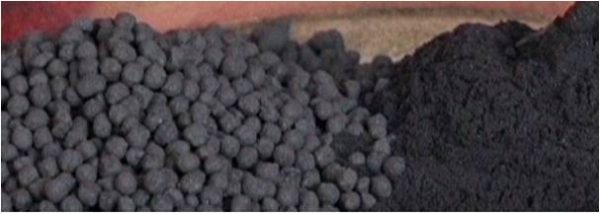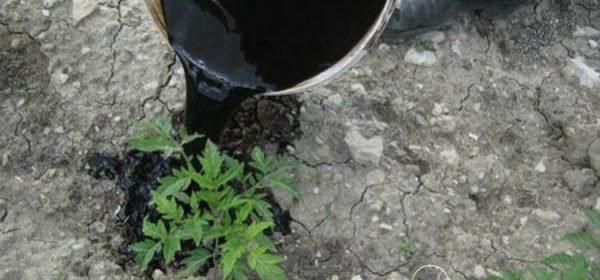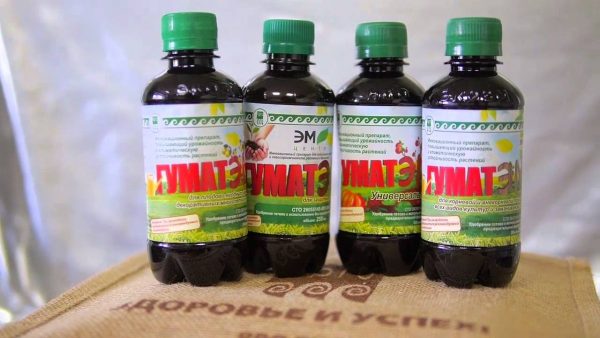How to use humic fertilizers for a positive effect
Content
Varieties of humic fertilizers
Humic fertilizers belong to organic food, since they are based on manure, bird droppings, composts, peat and green foliage. Such "goodness" is in almost every household, therefore it is considered a local feeding. The task of organic acids is to fertilize the soil as much as possible in order to ultimately provide everything necessary for a high yield of agricultural and ornamental crops. Together with them, the soil receives all the necessary elements at the macro and micro levels.
Humic fertilizers have their own classification, however, they are united by the presence of humic acids in the base. Such fertilizers are formed in the process of complex biochemical decomposition of plant elements (leaves, roots and branches) and protein residues of animals. Every year, liquid humic fertilizers are gaining more and more popularity, since their composition is very close to mineral fertilizing, but there are an order of magnitude less nitrates in the soil after application. Such additives are produced in two forms:
- liquid complex formulations;
- granular formulations.
The most widespread among domestic agricultural technicians are liquid substances. They are actively used as large agricultural enterprises and farms, as well as owners of small household plots. The most popular are the following humic compositions:
- Gumi 20 Universal is a universal organic-mineral fertilizer, liquid in composition. It is used for processing potato tubers before planting, vegetables, berries and fruit trees, shrubs, as well as for indoor ornamental plants. The consumption of the finished diluted fertilizer (200 liters) is enough to process 100 sq.m. area.
- Gumi 20 Rich - a top dressing for vegetables and berries, as well as greens. Lawns and flower beds respond very well to the introduction of acids. Potash fertilizer, as well as a full set of macro and microelements have a protective and stimulating effect.
- Gumi 20 Rich House - feeding for seedlings and flower beds, vegetables and herbs, which are grown in small quantities at home.
- Gumi 30 Universal, produced in the form of a paste, is a concentrate of more than 80 elements and acids. Scope of application: budding period; bloom; fruiting.

- Gumi Omi Compostin is intended for accelerated maturation of compost. Phytobacteria in its composition rid the compost of fungi and bad bacteria, and the amount of nutrients and acids increases tenfold.
- Gumi 20 KorneSil Kuznetsova is a preparation containing only organic acids. Effective for accelerating the growth of seedlings, cuttings, seedlings and rapid root formation. It can be used after transplanting and diving seedlings.
Video "Essential Nutrition Information"
Video review of humic plant food.
Relevance of use
Fertilizers actively affect plants, as:
- Potassium and a complex set of organic acids can radically affect the chemical and physical composition of the soil.
- Humates are ways to influence microorganisms, getting to the top of the culture.
- The metabolic processes in the soil are significantly improved, which means that the biological activity of plants in general increases.
- Humins - as a complex additive, can increase yields and maximize the fertility of depleted soils.
Potential risks to soil and crops
Despite the fact that the application of humic fertilizers in most cases is a boon for plants, there are still risks for the soil and crops. First of all, they are associated with the improper use of humic acids: too large or, on the contrary, insufficient dosage for a particular plant. To avoid negative effects, it is important to make the right solution and water the plant at the root or outside the root, depending on its type.
How to use correctly
Humic additives should be used even at the stage of seed treatment: seeds, tubers or cuttings.
Getting into the nutrient medium, seeds, tubers and cuttings become more protected against negative environmental factors, and microbes and fungi are killed as much as possible. Treatment with fertilizer, which contains many useful acids, improves seed germination, as well as their further growth. Thus, the use of organomineral fertilizers significantly increases the germination of the seed even in the most unfavorable conditions.
If you use a seedling supplement, then in this case you will get a more developed and strong root system. Nitrogen and other fertilizers with an organic base can be used together in humins. If you know that the soil is already rich, then you should not add additional humic components, as this can lead to negative consequences. Gumi are able to quickly and effectively affect the soil to release nutrients and transport them to the plant in a quality manner.
Peat-based humic additives are used for feeding adult crops. The most responsive to humic nutrition are tomatoes and eggplants, radishes and cabbage, beets and carrots, peppers. Humic acids and salts enhance plant growth, which means they contribute to an increase in yield up to 50%. Since the composition of humic fertilizers is not the same, the dosage for preparing a liquid for feeding is indicated individually for each type of product. The introduction of organomineral fertilization provides additional nutrition for the soil, as well as reliable protection of seedlings and adult plants through a strengthened and nutrient-rich root system.
Video "Feeding cucumbers"
Informational video about feeding cucumbers with humic fertilizers.




